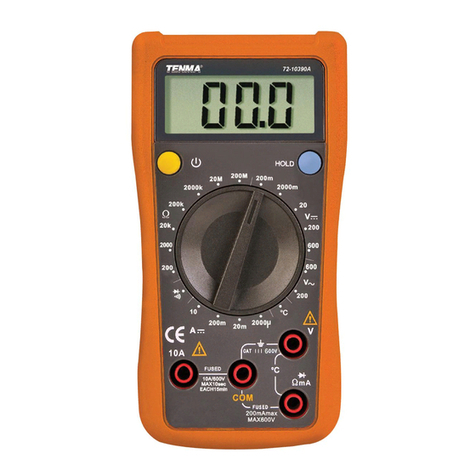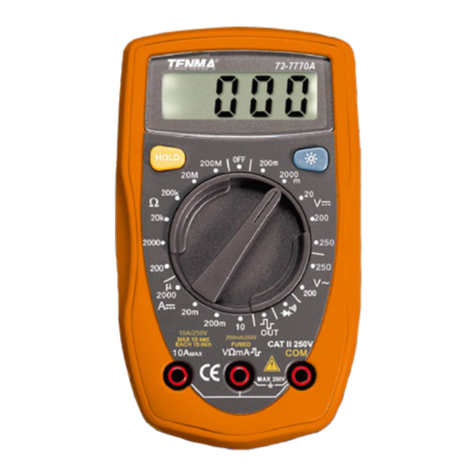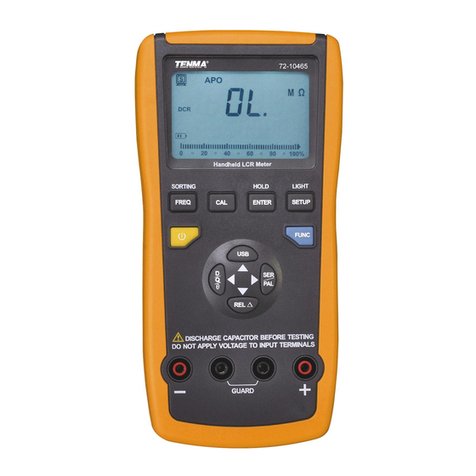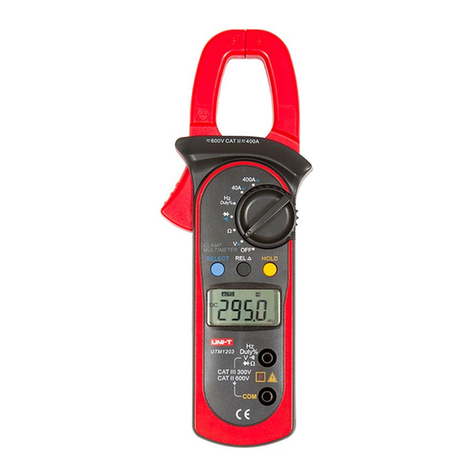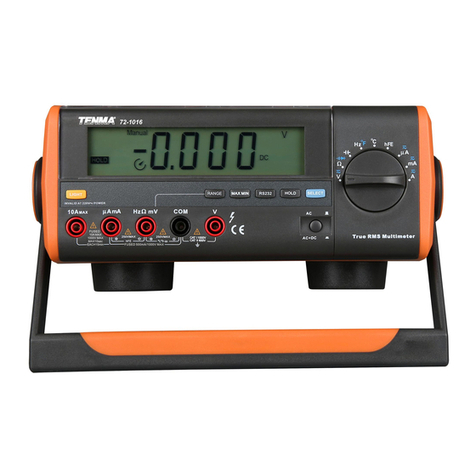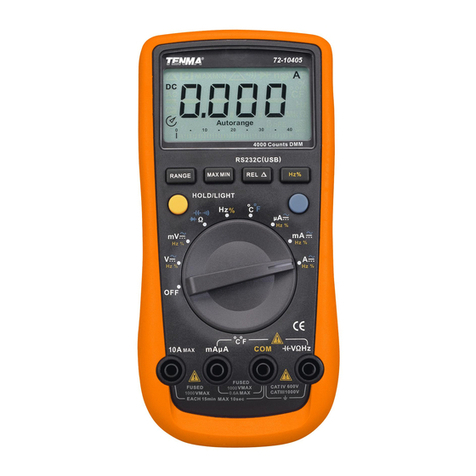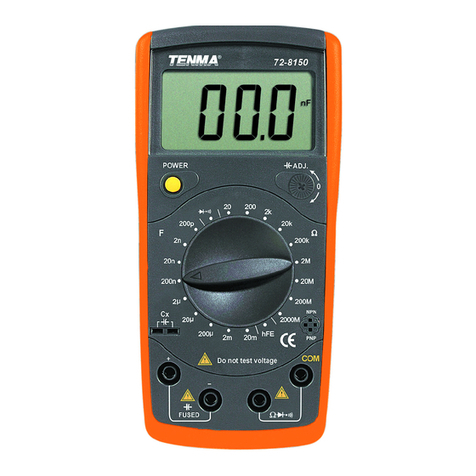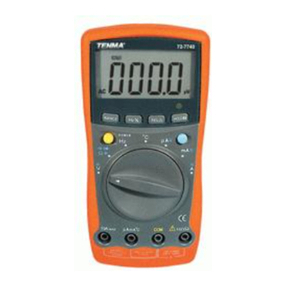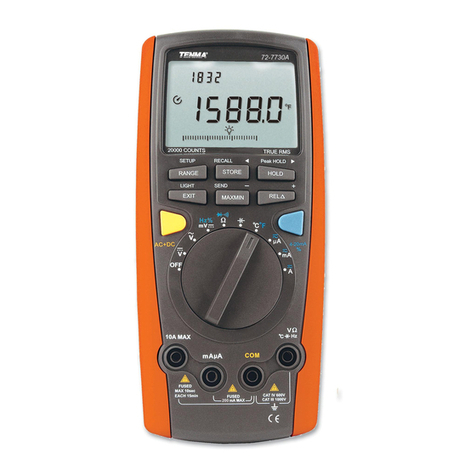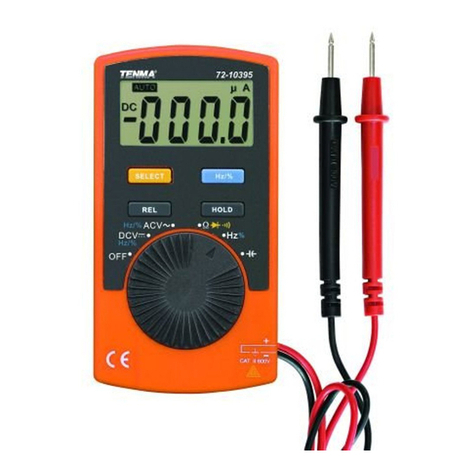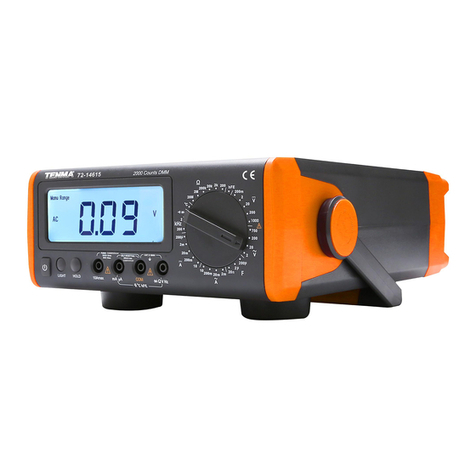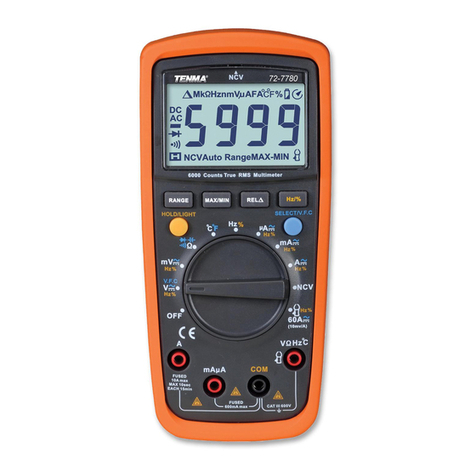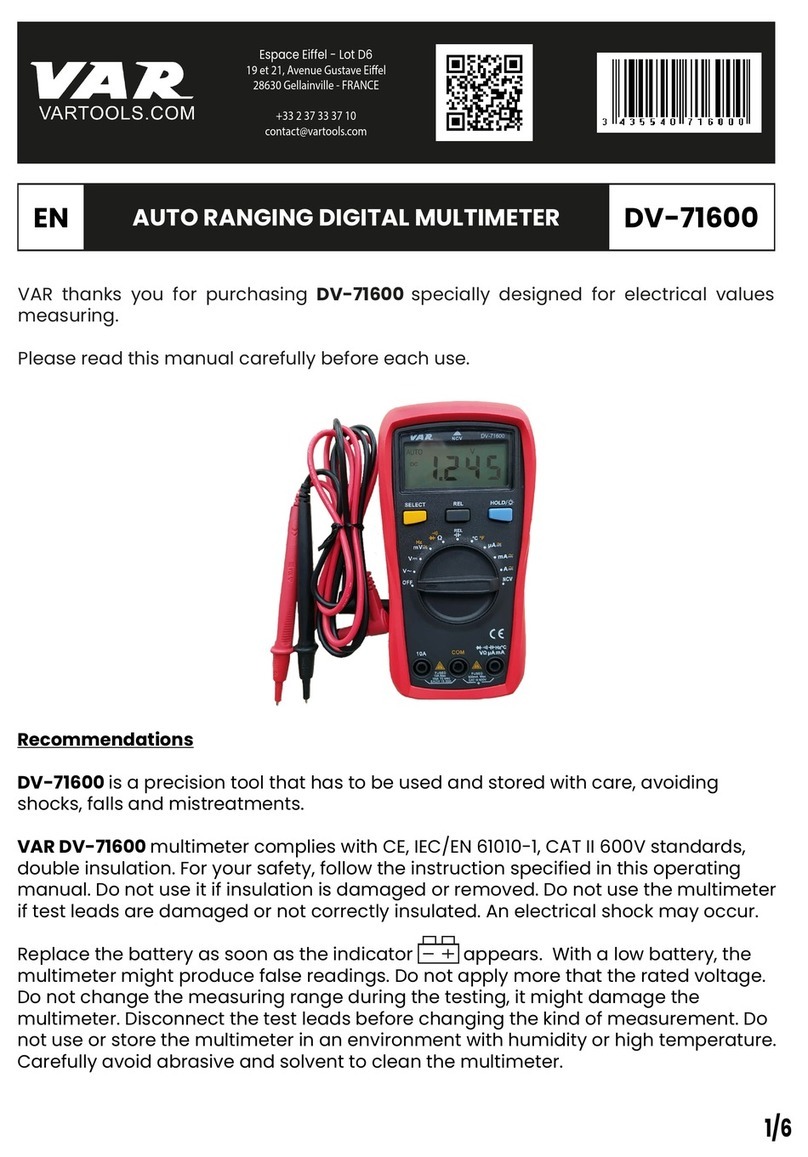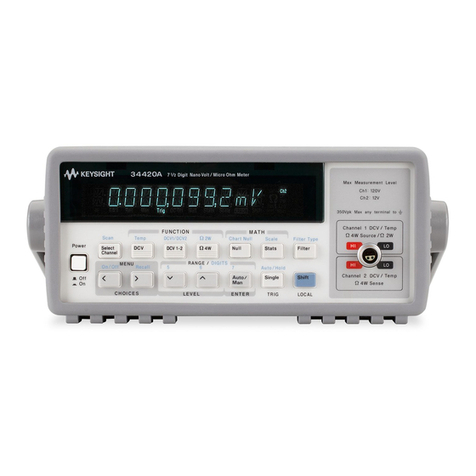
10
Continuity Test
Warning: To avoid damage to the meter or to the devices under test, disconnect circuit
power and discharge all the high-voltage capacitors before testing for continuity.
To avoid personal injury, please do not attempt to input voltages higher than 60V DC or
30V AC.
To test for continuity, connect the meter as below:
• Insert the red test lead into the
Ω
terminal and the black test lead into the COM
terminal.
• Set the rotary switch to
Ω
and press SELECT button to select
measurement mode.
• Connect the test lead across with the object being measured. The buzzer sounds
if the resistance of a circuit under test is <50
Ω
, the circuit is in good condition. The
buzzer does not sound if the resistance of a circuit under test is >50
Ω
, the circuit
is broken.
• The measured value shows on the display and the unit is
Ω
.
Note: In continuity mode, the resistance range is 400
Ω
, and the open circuit voltage is
approximately 1.2V.
• When continuity testing has been completed, disconnect the connection between
the test leads and the circuit under test.
Note: When measuring low resistances, the test leads and internal wiring will add
approximately 0.1 ~ 0.2
Ω
of error. To obtain accurate readings in low-resistance, short-
circuit the test lead beforehand and record the reading obtained, call this reading as
X. Then use the equation: measured resistance value (Y) – (X) = accurate readings of
resistance.
• If reading with shorted test leads is not < 0.5
Ω
, check for loose test leads or
possible incorrect function selection.
• When measuring high resistance (>1M
Ω
), it is normal to take several seconds to
obtain a stable reading.
• The LCD displays OL indicating open-circuit or the resistor value is higher than the
maximum range of the meter.
• When testing the resistance signal from the calibrator, it is necessary to press and
hold the RANGE while turning on the Meter to change the maximum display to
4000 counts but the accuracy remains unchanged.
• When resistance measurement has been completed, disconnect the connection
between the test leads and the circuit under test.

